Heralded for its gripping realism, Steven Spielberg’s Saving Private Ryan provides the most harrowingly authentic depiction of battle in cinematic history. The opening sequence, depicting the D-Day landing at Omaha Beach, has, in particular, been lauded for its intensity, realism, and emotional impact, setting a benchmark for war films. Have you ever wondered what makes it feel so visceral? Here are 20 reasons Saving Private Ryan’s opening 30 minutes changed cinema.
Immersive Cinematography

Immersing his viewers in the chaos of battle was at the fore of Spielberg’s vision; and to engage our senses, he used various handheld cameras. The shaking, dipping, and weaving camera movements mimic a soldier’s perspective, creating a sense of realism and immediacy. This technique draws you into the action, making you feel like a participant rather than a spectator.
Authentic Sound Design

In the film’s opening scenes, sound is used meticulously to enhance realism, deploying the deafening noise of gunfire, explosions, and shouts to create an overwhelming sensory experience. Spielberg also uses periods of muffled sound to depict the disorientation experienced by soldiers, adding to the scene’s authenticity.
Unflinching Depiction of Violence

Portraying the brutality of war would be impossible without graphic violence, and Spielberg doesn’t shy away from showing the gruesome realities of D-Day, including bloodshed, injuries, and death. This portrayal was a departure from the sanitized versions of war often seen in older movies, adding to the film’s emotional impact.
Emotional Focus on Characters

Amid the chaos, the focus on individual soldiers, particularly Captain Miller, adds an emotional layer to the scene. Alongside sweeping shots of the battle, we witness the horror of war not just on a grand scale but through the eyes of individual characters, making the experience more personal and harrowing.
Historical Accuracy
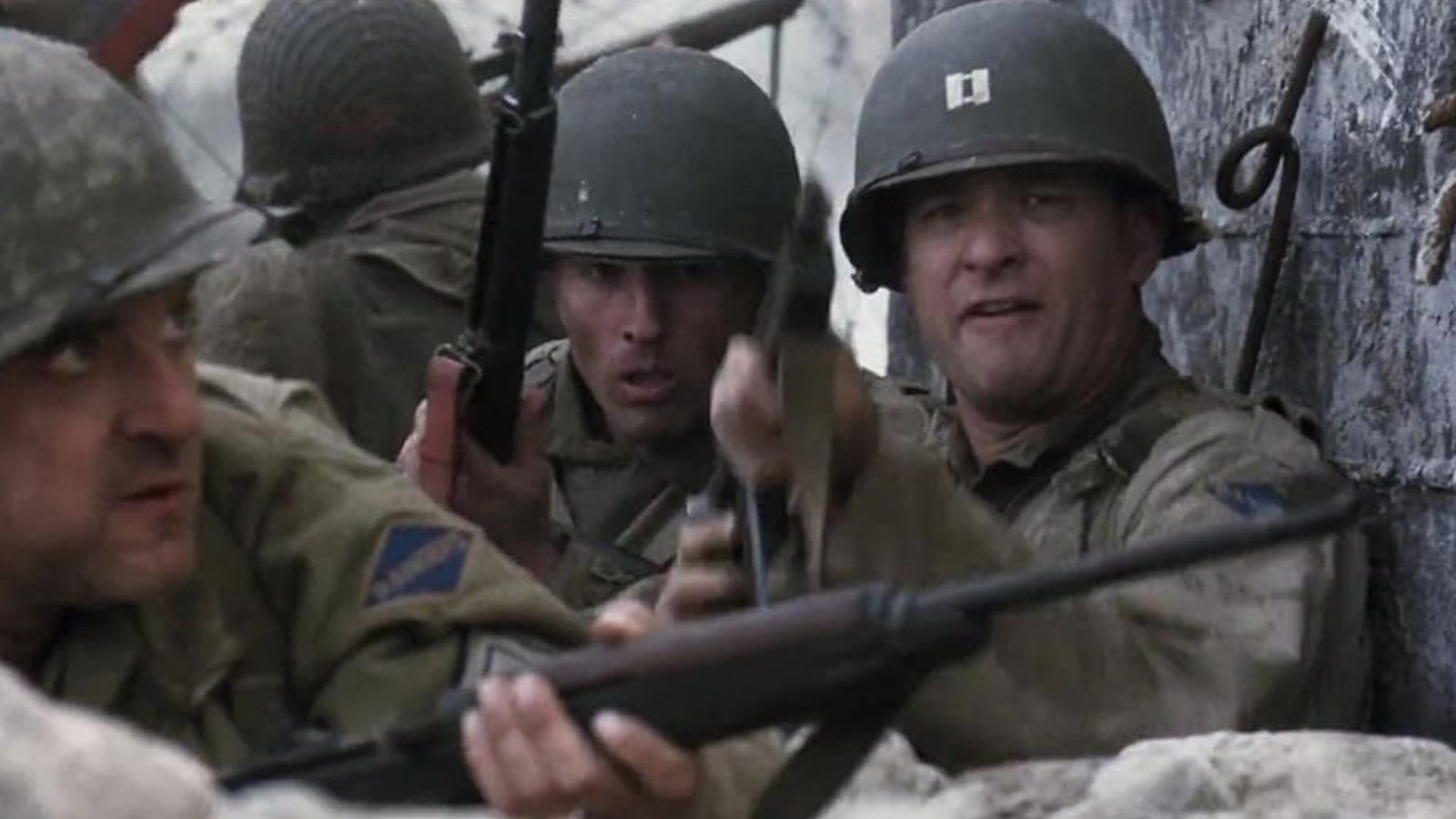
While it was always going to be hard depicting the real-life experience of the Omaha battle, Speilberg was determined to maintain historical accuracy. After meticulous research and interviews with real-life soldiers, the finished Omaha Beach scene has been widely praised for its historical accuracy. Veterans of D-Day commended the film for realistically depicting the horrors of the landing. This authenticity helps in educating audiences about the realities of war, beyond the glorified versions often seen in media.
Realism in Special Effects
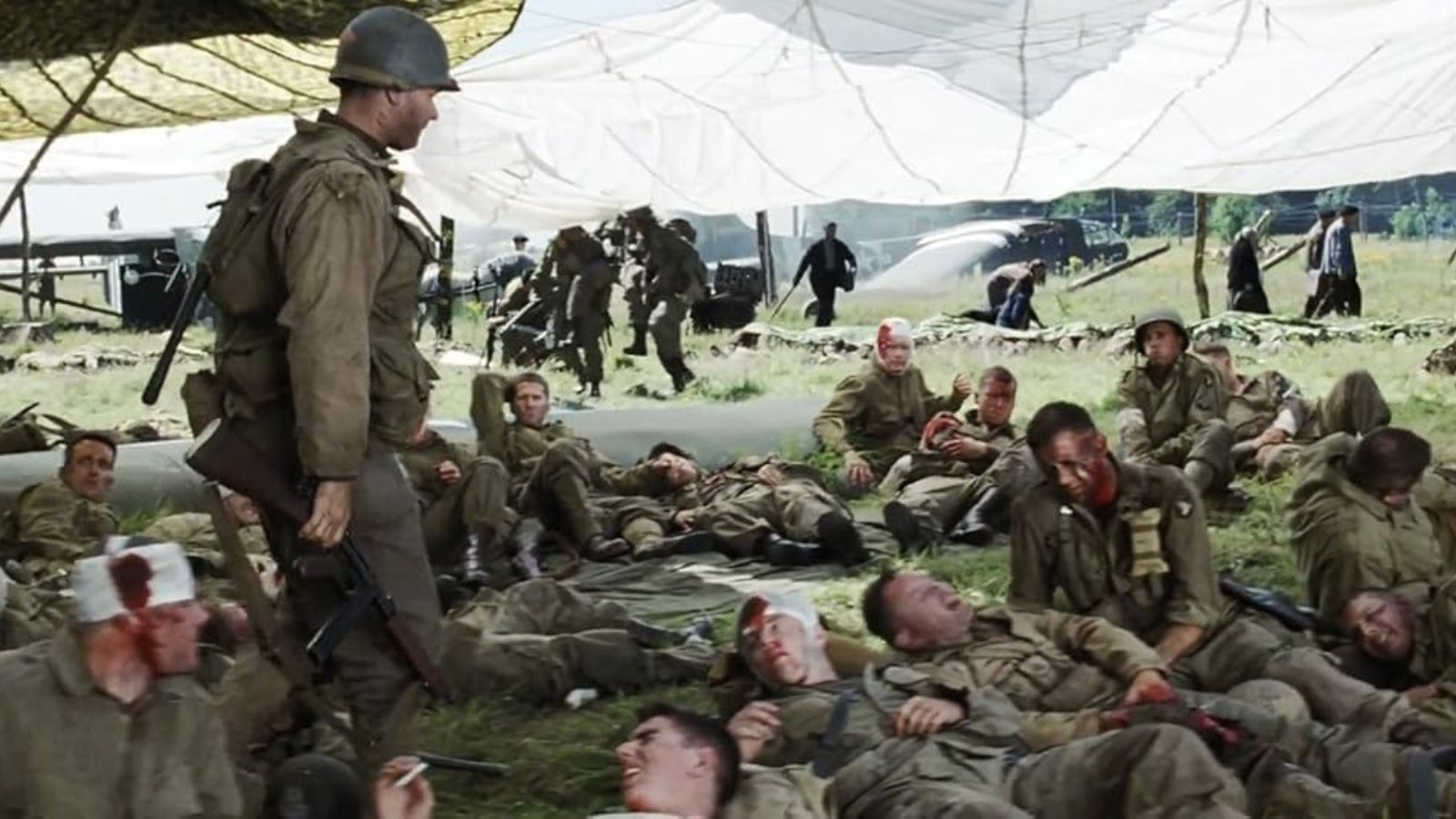
Groundbreaking for their time, special effects used in the opening scene, combined with CGI, created a realistic portrayal of the battlefield. The attention to detail, from the explosions to the ruthlessness of the injuries, adds to the scene’s authenticity.
Gritty Visuals

With its desaturated colors and gritty texture, the visual style of the opening sequence reflects the bleakness of the situation, immersing you further into the grim reality of war.
Engaging Soundtrack
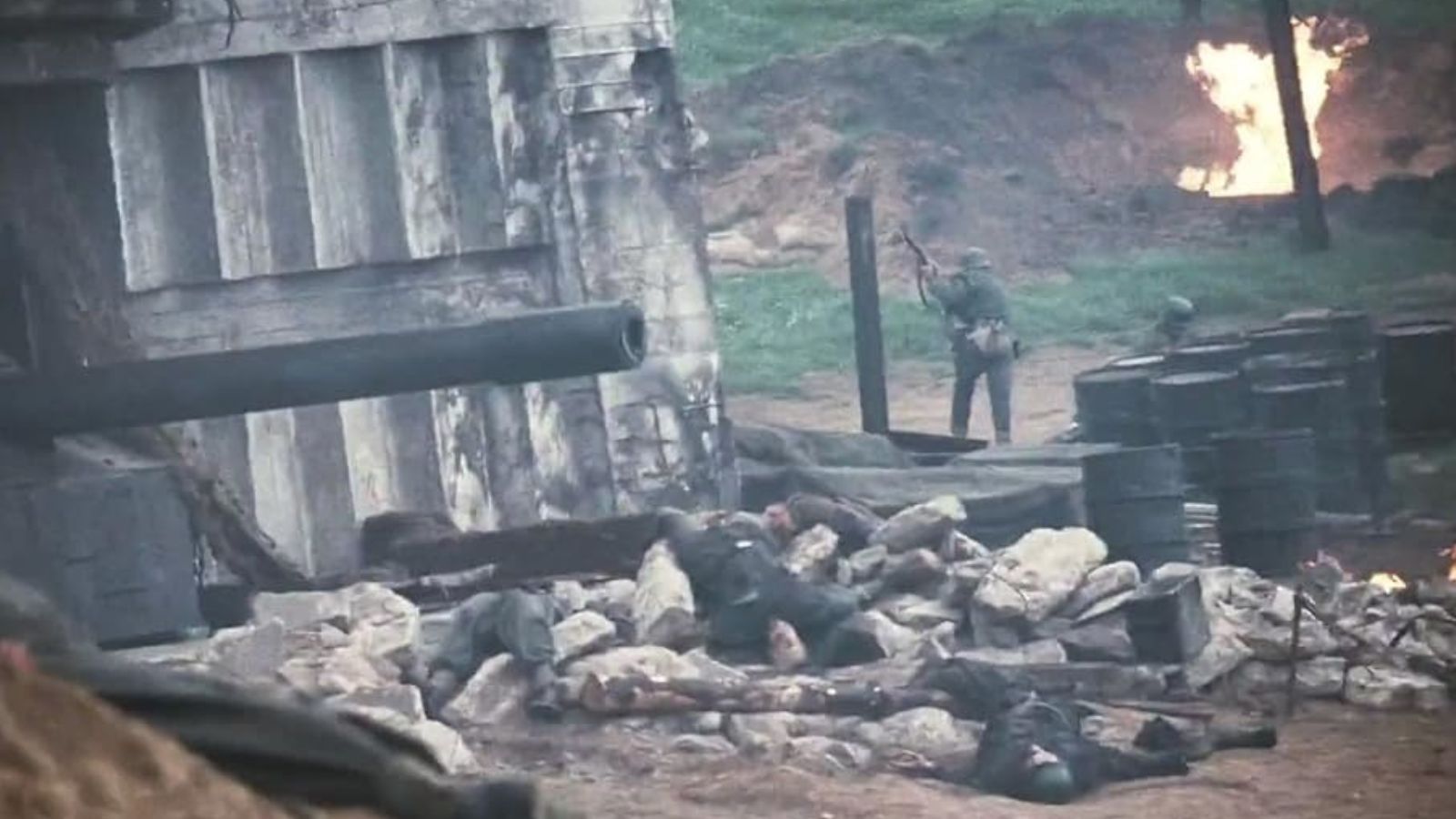
John Williams’ score is deliberately subdued in the opening scene, allowing the sounds of the battlefield to take precedence. This choice amplifies the tension and chaos, making the scene even more impactful. And Williams’ decision to wait until he saw an early cut of the film before composing the score speaks to his dedication to capturing the film’s emotional core.
Perspective of Soldiers
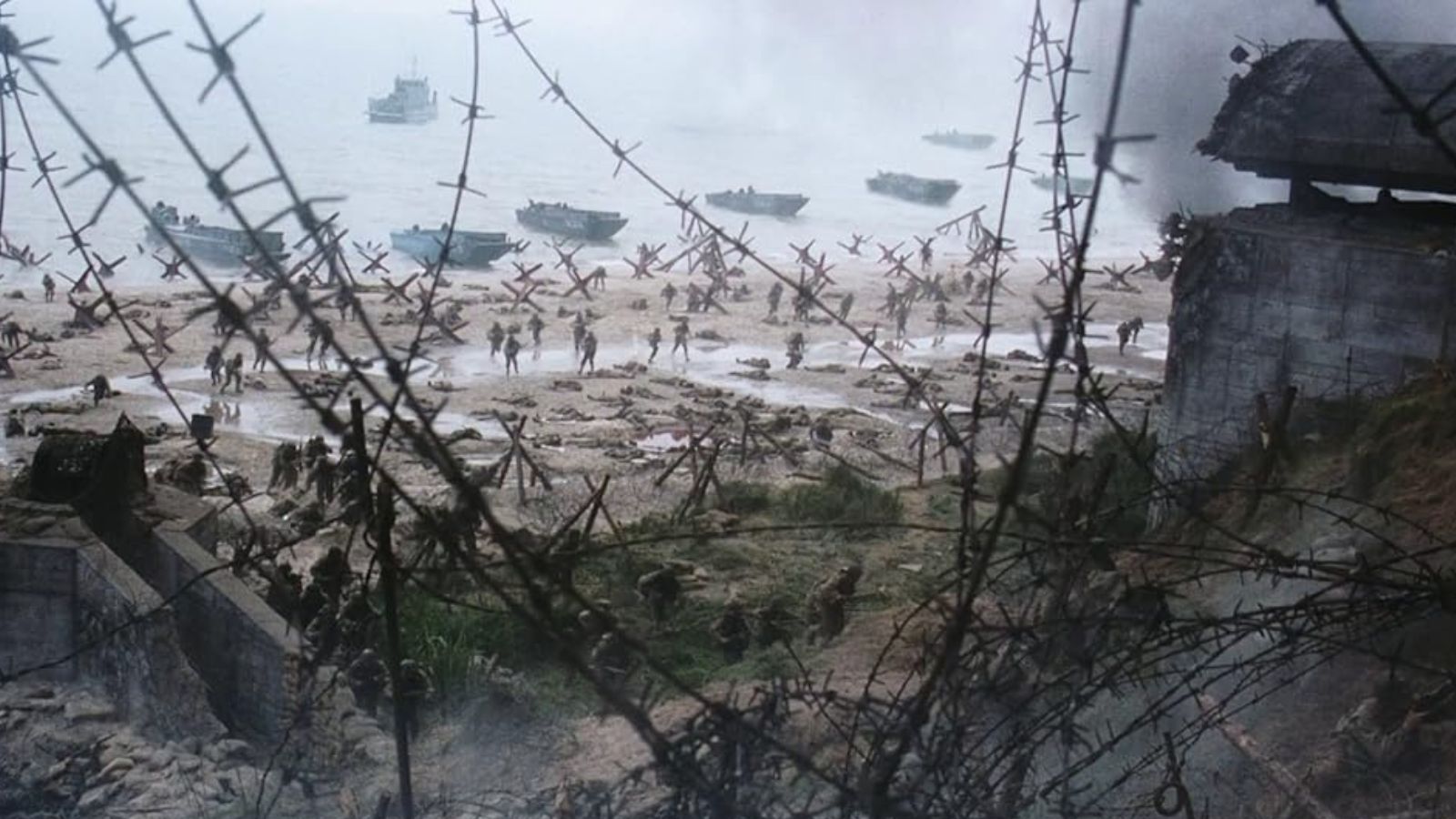
Simulating the perspective of soldiers as they landed on Omaha was achieved using specific camera angles. With a 45-degree or a 90-degree shutter, Spielberg was able to convey the confusion, fear, and urgency felt by the characters.
Attention to Detail
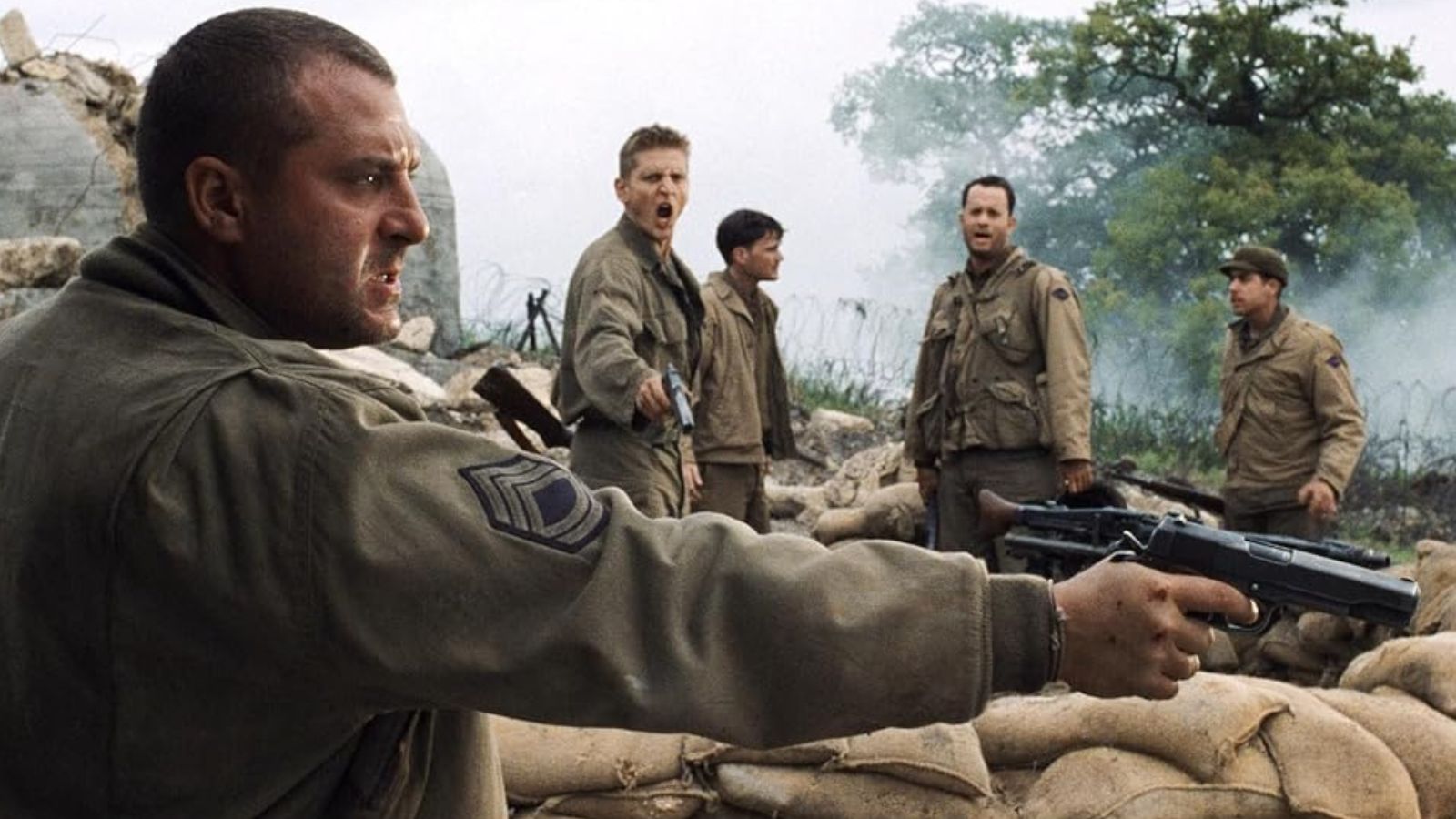
Spielberg’s meticulous attention to detail is evident in every frame of the opening scene. From the uniforms to the weaponry, every element is designed to be as historically accurate as possible, and this dedication to detail enhances the overall authenticity of the scene.
Impactful Performances

The performances of the actors, particularly Tom Hanks as Captain Miller, add poignancy and depth to the opening sequence. Hanks’ portrayal of fear, determination, and leadership amid the chaos is both compelling and believable, drawing you into the narrative and taking you through an array of emotions.
Dynamic Editing
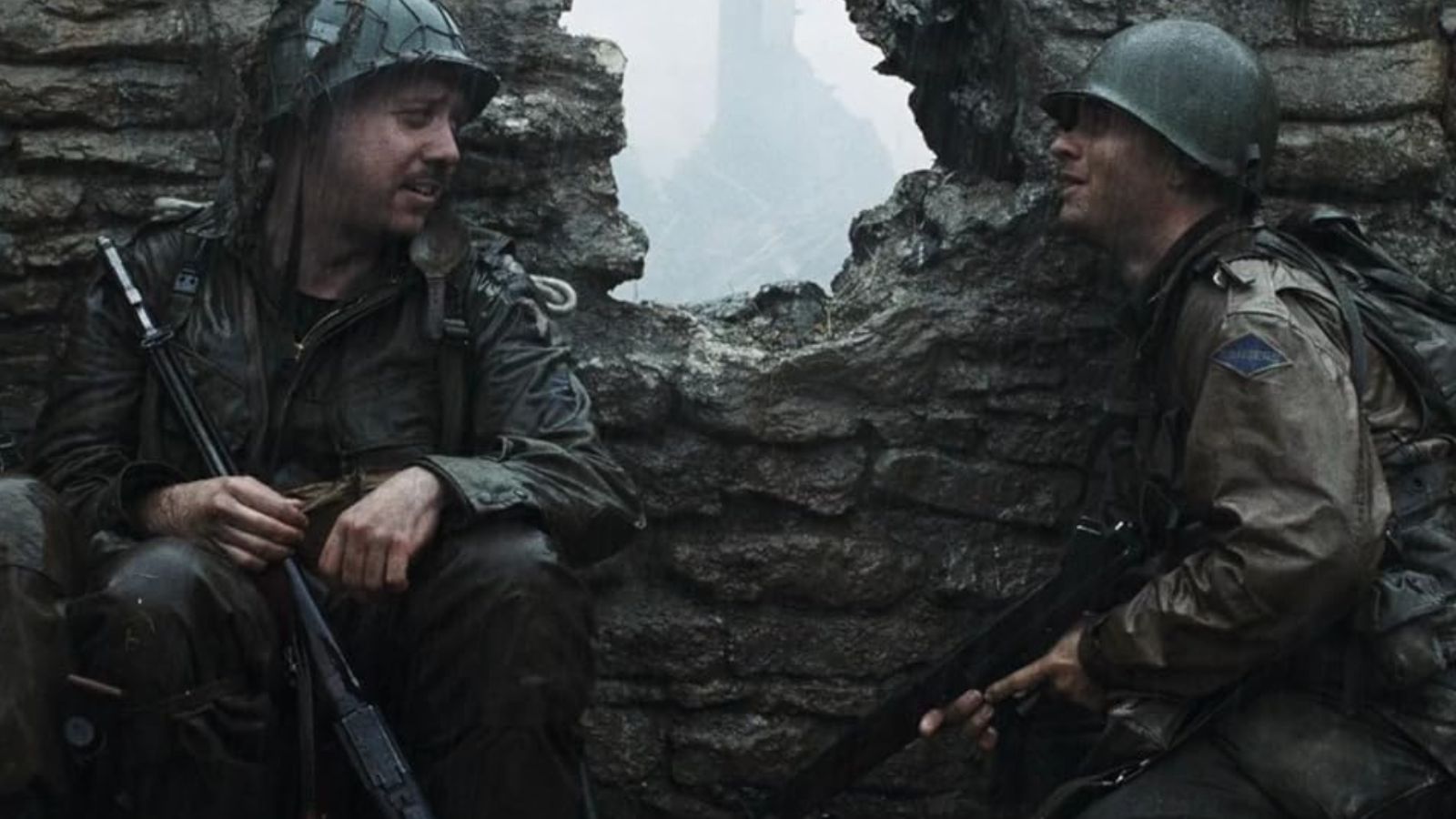
With rapid cuts and seamless transitions that maintain the intensity and pace of the battle, the editing of the opening scene is nothing short of masterful.
Authentic Costuming
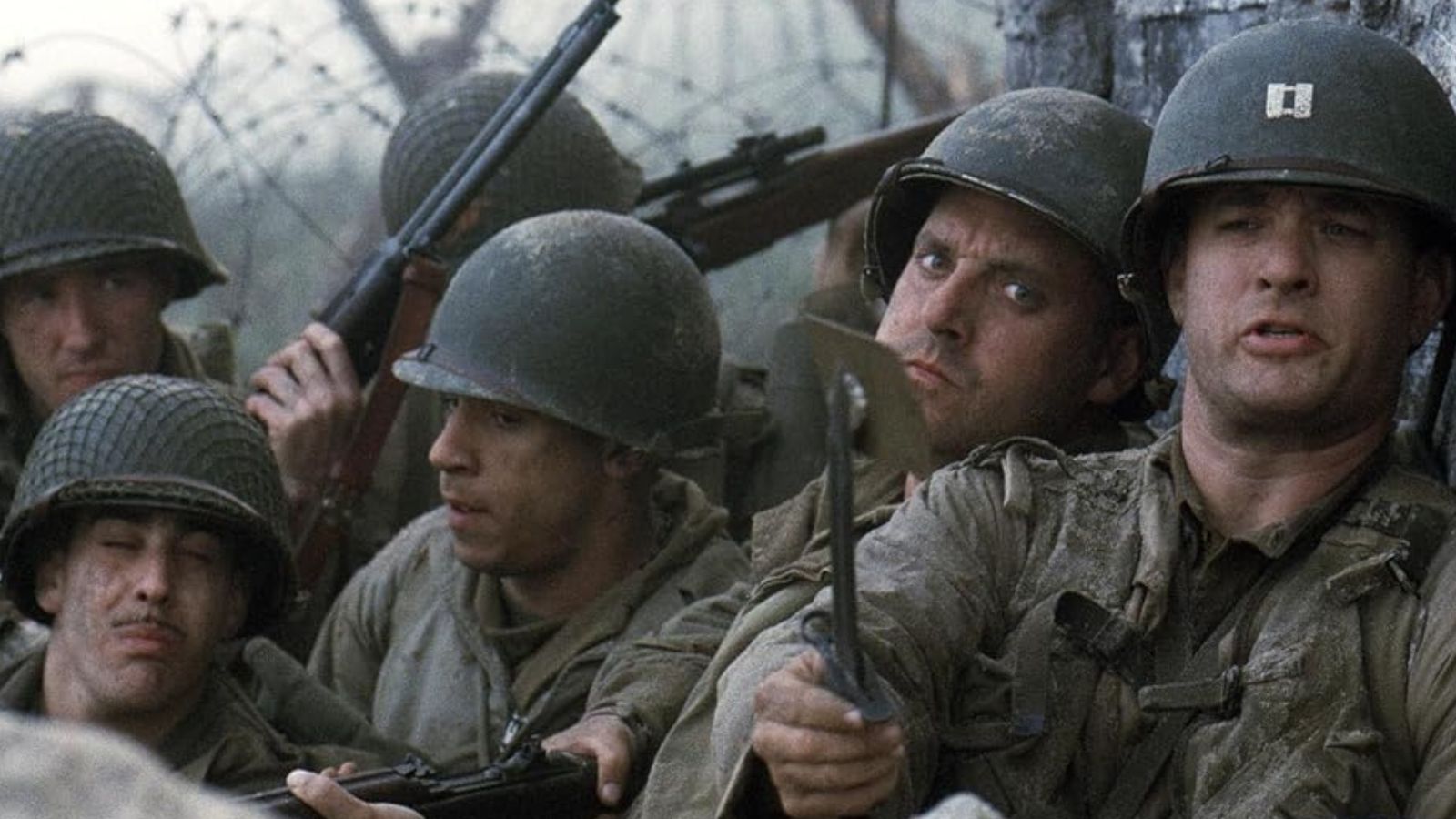
Designed to be as authentic as possible, the costumes used in the opening scene were the result of a rigorous fact-checking process. The attention to detail in the uniforms, helmets, and gear adds to the historical accuracy and immersive quality of the scene.
Realistic Makeup and Prosthetics
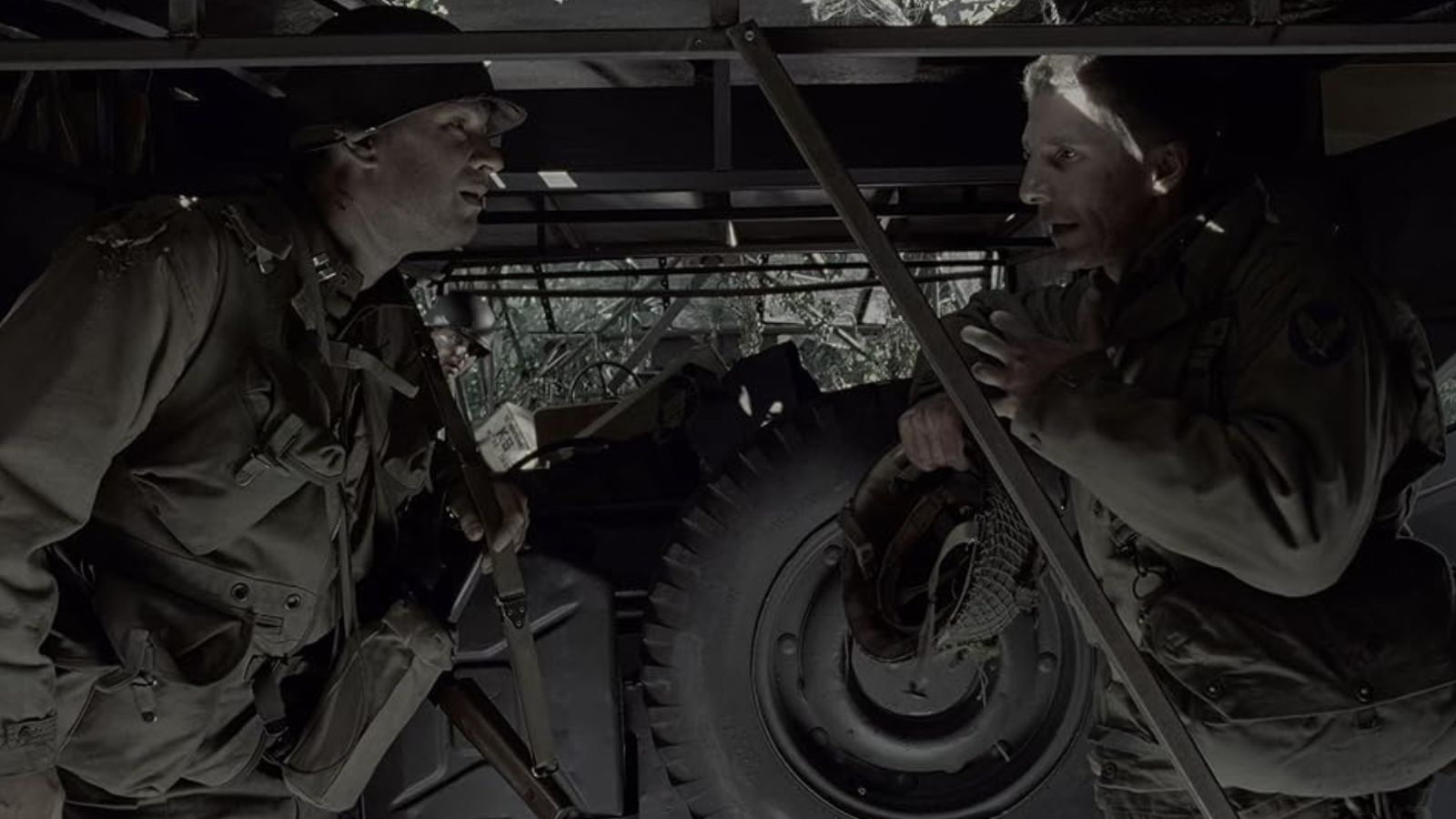
The use of makeup and prosthetics to depict injuries and wounds is highly realistic. Essential in underscoring the physical toll of war, the graphic nature of these effects adds to the horror and brutality of the iconic battle sequence.
Cinematic Techniques

Spielberg employs various cinematic techniques to enhance the realism of the opening sequence. From the use of slow motion, rapid cuts, and tight close-ups, each technique creates a sense of urgency and intensity, no matter how subtle.
Veterans’ Praise
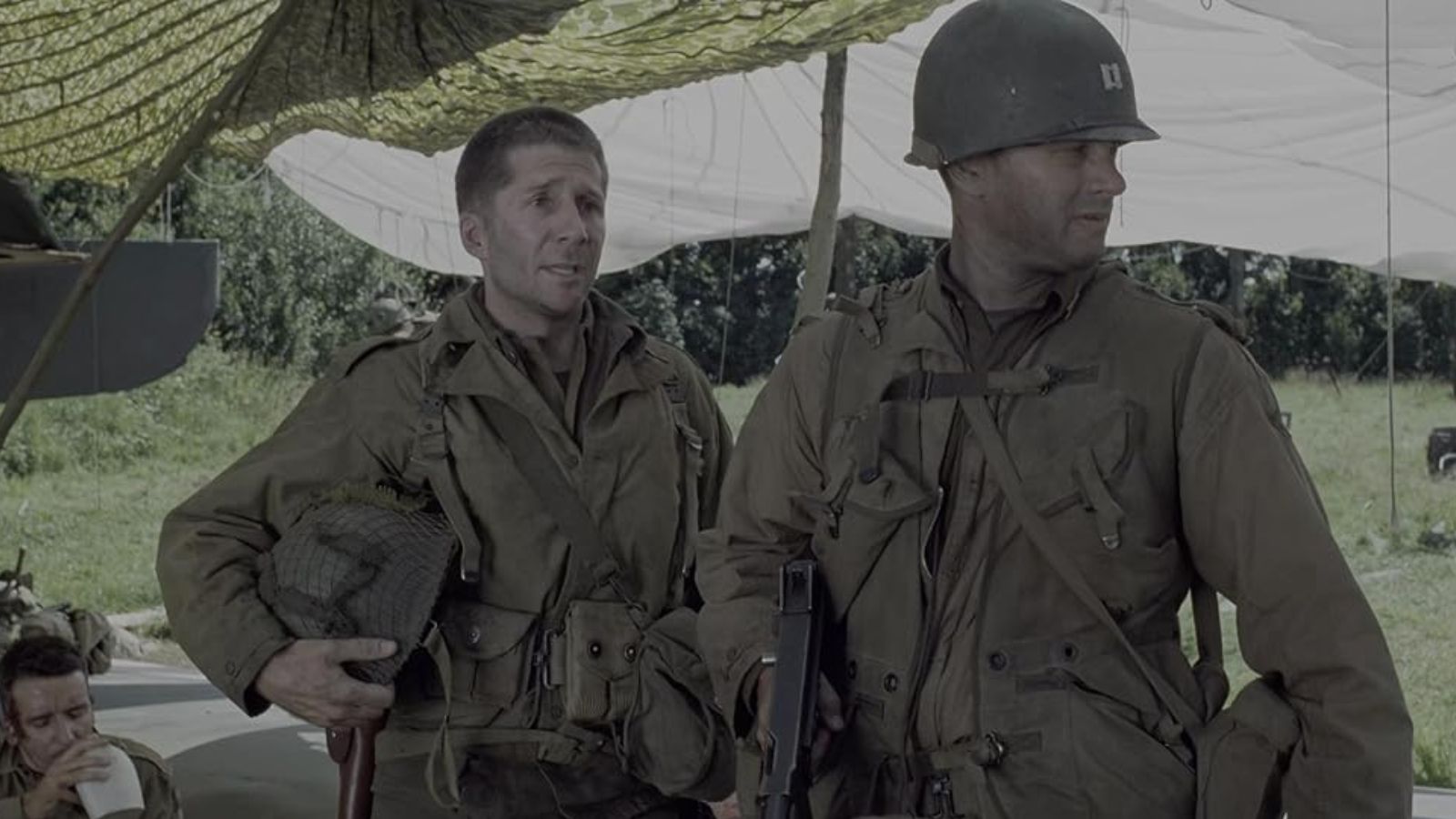
Saying Speilberg’s vision of the Omaha battle is the most realistic they’ve seen, veterans of D-Day have praised the film for its depiction of the landing. Their endorsements lend credibility to the film’s portrayal of the event, affirming its historical accuracy and emotional impact.
Cultural Impact
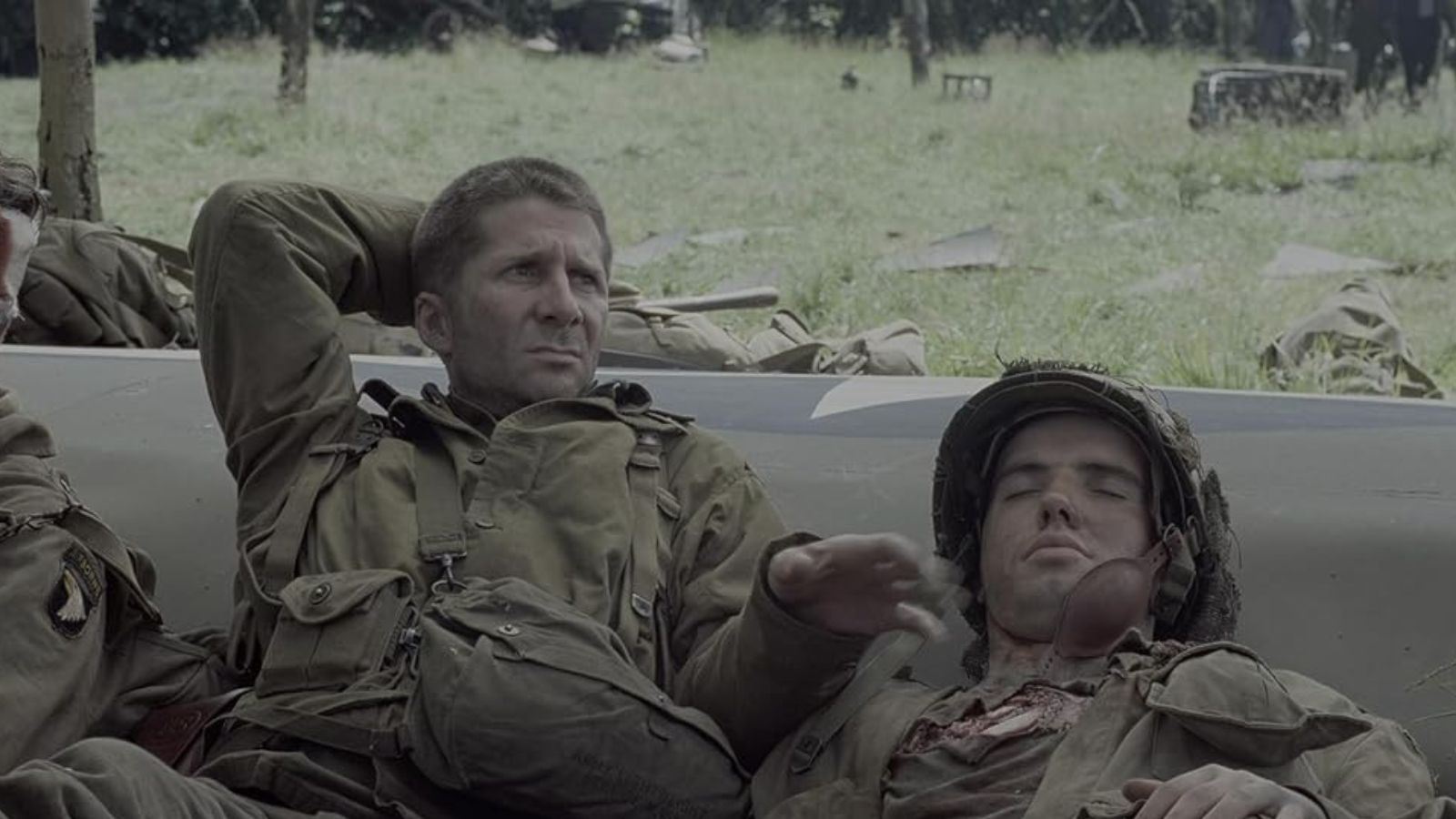
The opening sequence of Saving Private Ryan has had a lasting impact on both audiences and filmmakers, setting a new standard for war films and influencing the way battle scenes are depicted in cinema. The scene’s realism and emotional depth have made it a reference point for future filmmakers.
Educational Value
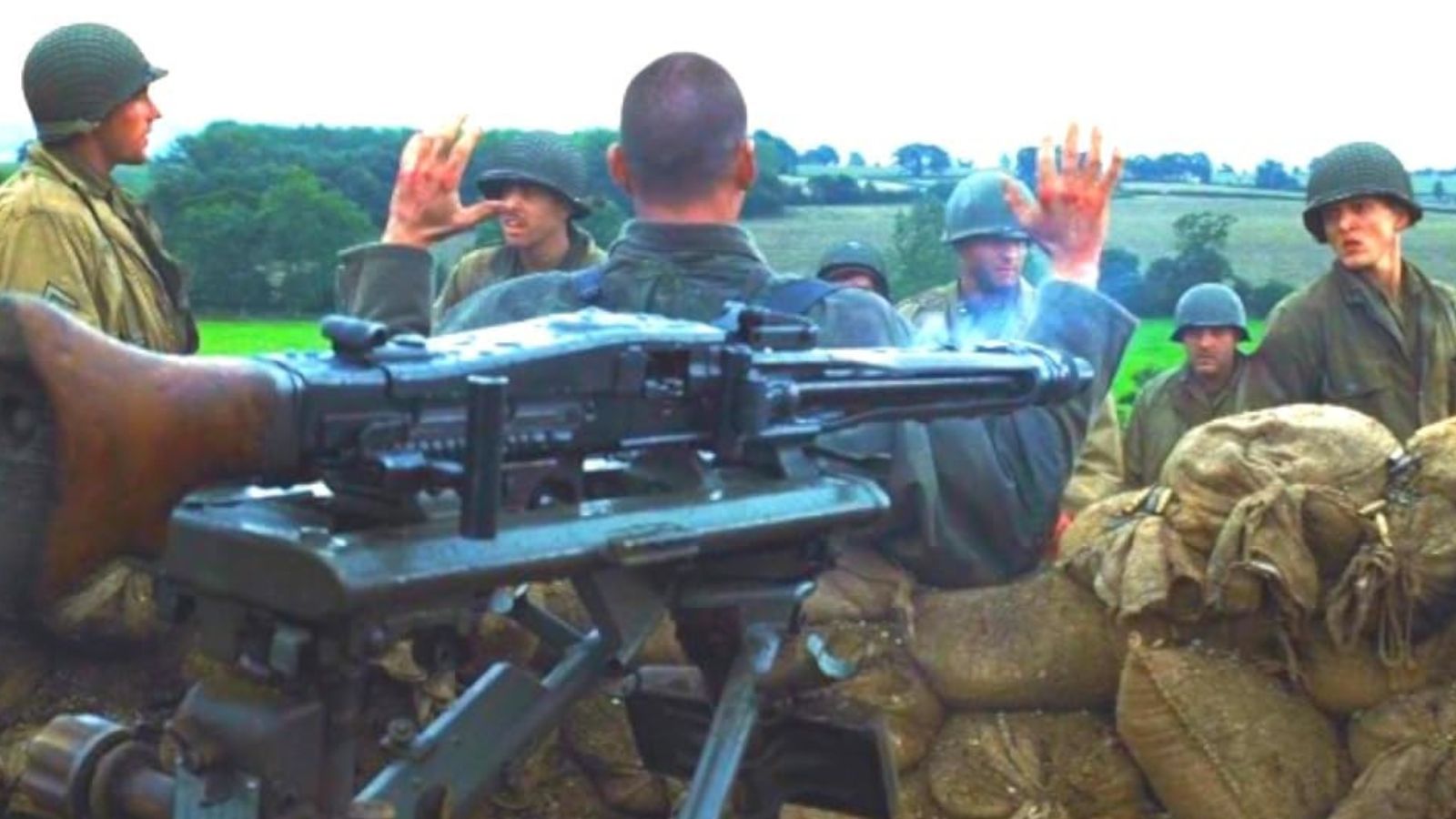
Few blockbusters serve as educational tools, but Saving Private Ryan’s opening scene offers a uniquely visceral understanding of the sacrifices made by soldiers during World War II, making it an important resource for historical education.
Legacy of Spielberg

Steven Spielberg’s direction in the opening sequence of Saving Private Ryan showcases his ability to combine technical skill with emotional storytelling. Few filmmakers captivate both critics and audiences to such a degree, and historical blockbusters such as Saving Private Ryan catalyzed Spielberg’s remarkable legacy.
Inspirational Impact
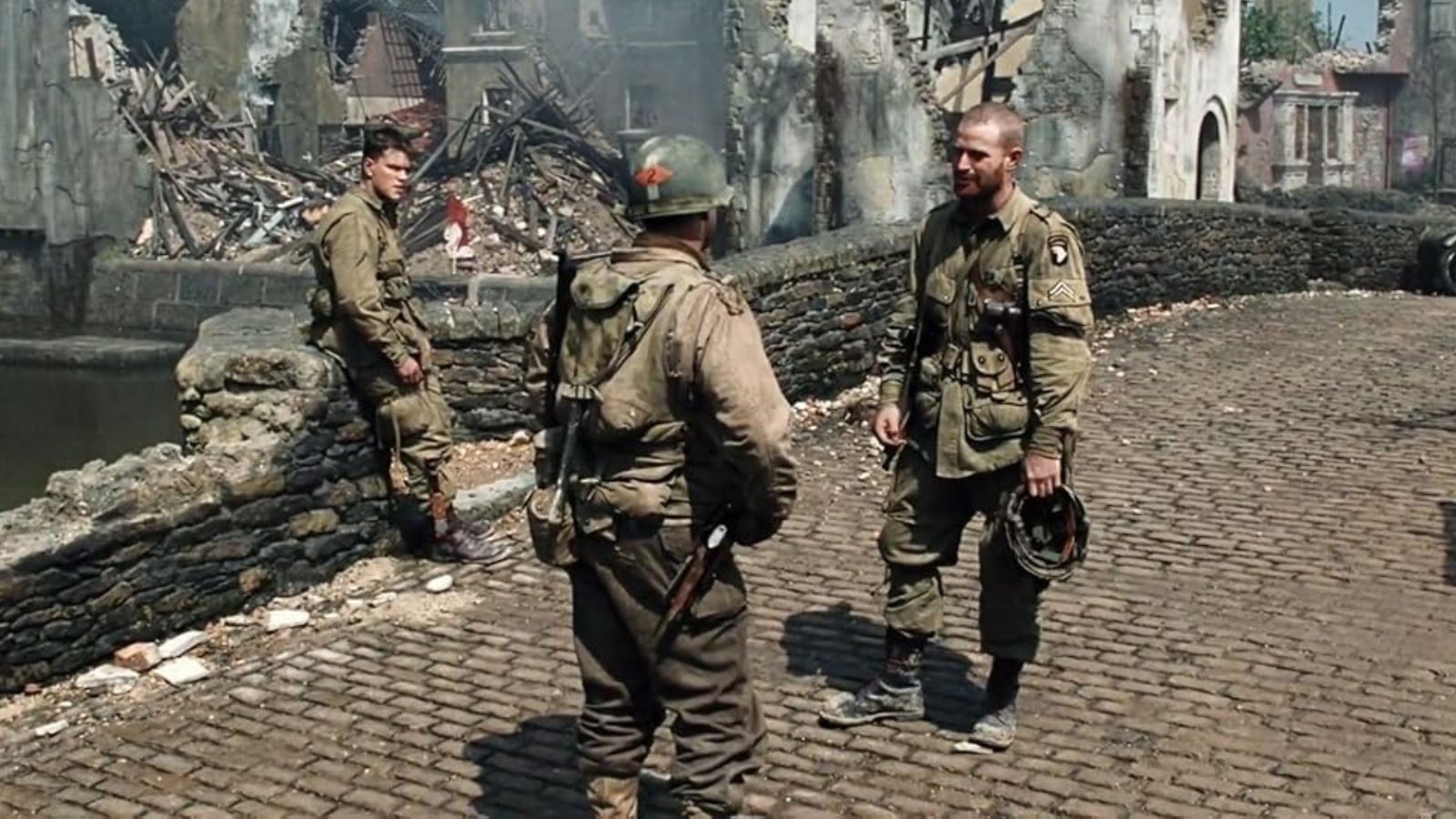
The opening scene of Saving Private Ryan continues to inspire filmmakers and audiences alike, with its rare combination of technical brilliance, emotional storytelling, and historical accuracy cementing its legacy.



